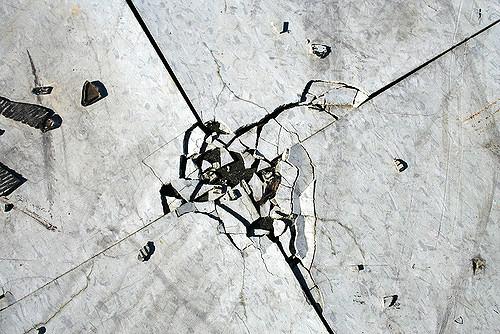The Islamic State: reinventing the narrative as reality bites
Posted By Jacinta Carroll on December 2, 2016 @ 06:00

The so-called Islamic State recently released a new propaganda video featuring iconic images of Melbourne [1], interspersed with explosions and IS fighters brandishing firearms in urban combat. What to make of such developments? Should Australia be worried?
The first and most important thing to remember with any new video by IS or a similar group is that it’s pure propaganda, and propaganda is the lifeblood of terrorists. So we need to look beyond the propaganda and what IS wants us to see, to understand what they’re trying to do and why.
Naming or showing specific locations isn’t a new entry in the terrorist propaganda playbook. In 2011 Al Qaeda featured the Sydney Opera House [2] on the cover of its Inspire magazine. In the September issue of the English-language version of its latest magazine, Rumiyah, IS featured a rather unusual ‘poem’ including an apparently random list of Australian place names beginning with the letter B [3], along with some iconic landmarks. The French, German and Bahasa Indonesian versions of the magazine included the same piece, but with local placenames. As all marketing professionals know, adding local culture and relevance is important to engage with your audience. IS hopes that this might inspire local sympathisers to carry out attacks in its name.
Australia has been named as a terrorist target before. Al-Qaeda looked at conducting an attack during the 2000 Sydney Olympics [4], and plots were uncovered to attack Holsworthy Barracks in Sydney and targets in Melbourne. The 10 Islamist terrorist plots disrupted by authorities in Australia in the past two years—including the 2016 ANZAC plot in Melbourne—show that the intent remains, but that authorities and businesses are alert to the threat and are working to safeguard against attacks.
We’ve experienced four terrorist attacks during this time, but all at a very low level. Authorities will take this latest threat seriously, but they’ll examine it in context, comparing it with other threat indicators and the intent and capability of local actors.
The latest IS video tells us two things. First, the terrorist group’s ability to direct attacks on these targets is limited, so it’s instead looking to ‘inspire’ others to undertake attacks it can claim. Australia has experienced four such attacks in two years, none of which were directed by IS, but all of which it celebrated as its own.
Second, the video demonstrates IS trying to distract both its supporters and the broader public from what’s really happening to its so-called caliphate and self-declared ‘holy war’. The physical caliphate is essentially no more, having been diminished to a series of safe havens and outposts, and IS has lost the conventional military battle seen since 2014. IS has lost most of its territory and is in retreat, with military defeat likely in the coming year.
The demise of IS as an ostensible ‘state’ highlights another important and interesting factor highlighted by the new video: IS is once again attempting to reinvent its image to compensate for its losses.
Two and a half years ago, Baghdadi infamously proclaimed his so-called state [5] from Mosul’s Great Mosque. Then, and through much of 2015, IS propaganda was dominated by images of the promised land of the ‘caliphate’, showing a comfortable lifestyle, complete with luxury homes and professions. IS offered would-be recruits a migration destination, with its territory differentiating it from its competitors in Islamist extremism.
The latest video couldn’t be more different. The environment is dusty and hard, with IS members shown fighting in the desert and villages, and undertaking attacks. That’s IS attempting to change the narrative. It did that before, when the battle started to turn against it, proclaiming the forthcoming ‘end of days’ with a great battle. Now, as its territory disappears along with some of its supporters, the narrative is morphing a second time to show IS as a fairly standard small insurgency group focusing on attacks.
In this video IS is saying that it’s now focused just on doing what it can to mount small attacks, and it calls upon its supporters to do the same, wherever they are.
IS will continue to focus on inciting and, if it can, directing attacks outside the Middle East to shore up its support base. Australia will remain a target. Some attacks will likely succeed. That’s why it’s important to continue to focus our efforts on removing IS’ base in the Middle East and denying the opportunity that provides to build terrorist networks and skills.
Article printed from The Strategist: https://aspistrategist.ru
URL to article: /islamic-state-reinventing-narrative-reality-bites/
URLs in this post:
[1] featuring iconic images of Melbourne: http://www.smh.com.au/national/melbourne-featured-in-new-islamic-state-video-20161117-gsrybg.html
[2] featured the Sydney Opera House: http://www.news.com.au/national/sydney-opera-house-on-cover-of-al-qaeda-magazine/story-e6frfkvr-1226098690913
[3] Australian place names beginning with the letter B: http://www.abc.net.au/news/2016-09-06/is-calls-for-attacks-in-australia-dismissed-as-propaganda/7819774
[4] attack during the 2000 Sydney Olympics: http://www.smh.com.au/articles/2004/05/19/1084917657236.html
[5] proclaimed his so-called state: http://www.aljazeera.com/news/middleeast/2014/06/isil-declares-new-islamic-caliphate-201462917326669749.html
Click here to print.